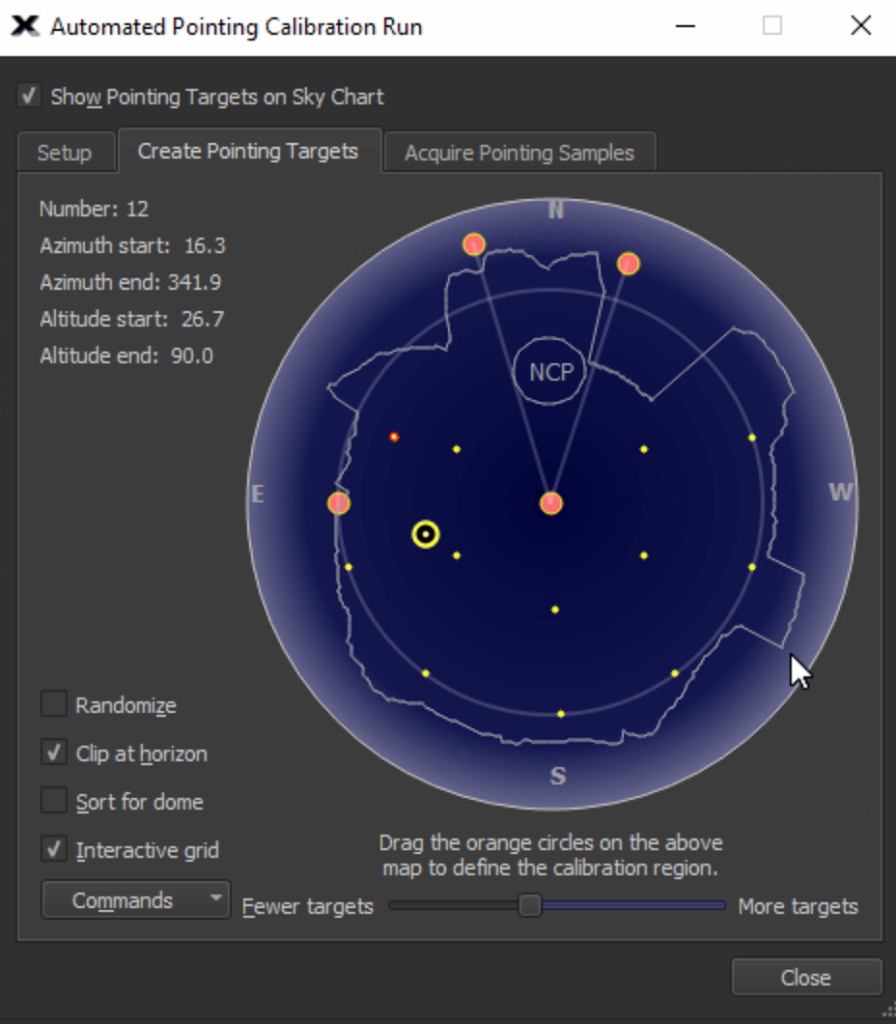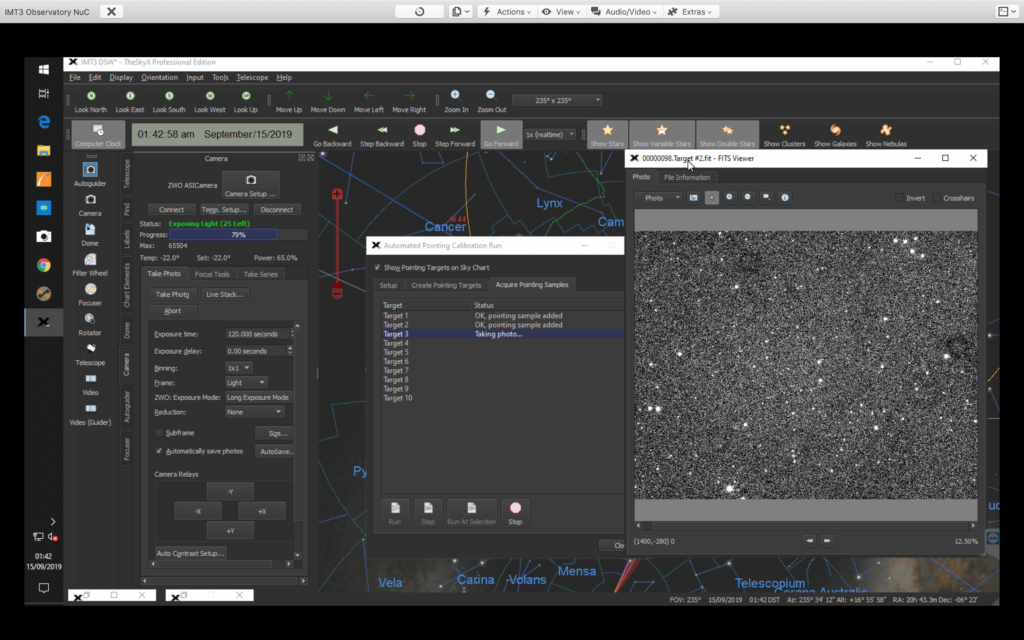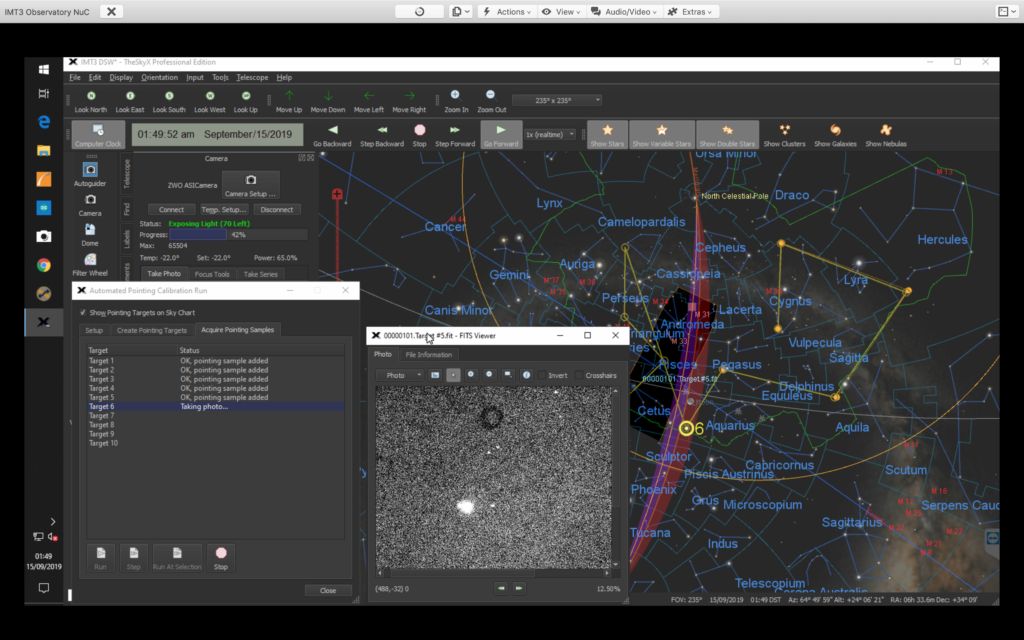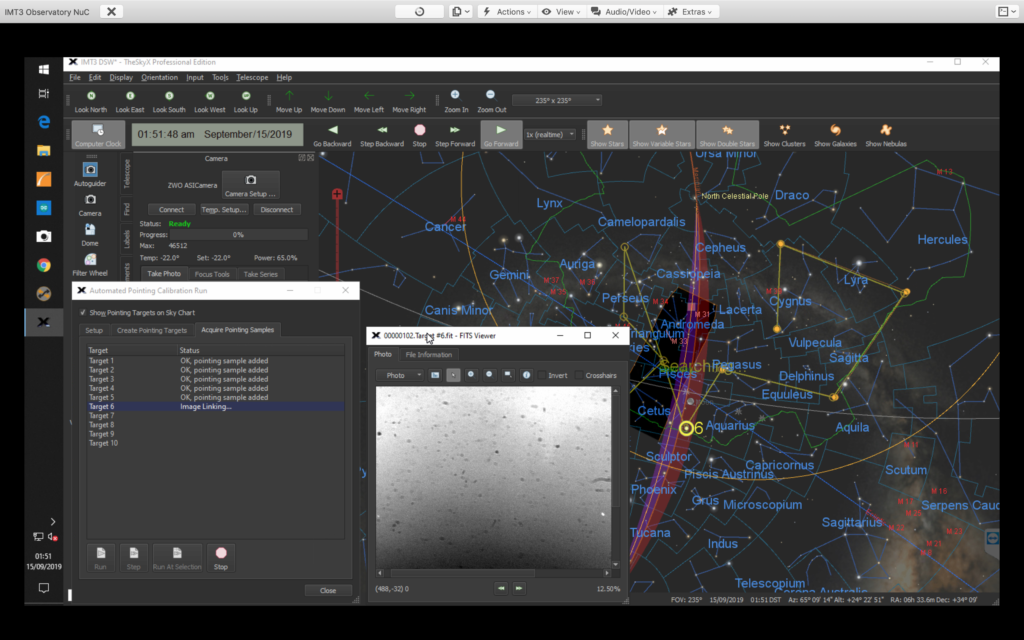Viewing time period – 19:47 – 02:58
Tonight Bob and myself had a couple of things to achieve on the dome so that it would be ready for Autumn. As the Moon was out in full force, Bob decided to have a go at ironing out some more configuration bugs with guiding whilst I later in the night would test out the automated TPoint run.

Something I had not appreciated about an automated run was that instead of selecting bright stars, slewing and manually centering as you would when doing a non-automated Tpoint run, the automated run takes images of random or selected areas in the sky rather than centering on a star and then determine how far off it is from where it thought. Unlike a Closed Loop Slew that would take 2 images, one when it completes the initial slew and another when it has shifted to account for the error and plate solving to make sure it is now in the right place, the automated Tpoint just takes that single image then moves on, registering the error as it goes, building the model and applying the correcting to make the pointing better.
So at 23:27 Bob had finished attempting to setup guiding in PHD2 on for the QHY5 guide camera on the Talk 102. There wee still some problems, especially around a little trailing in 2-3 minute images. I suspect that the guider was being over aggressive in correcting in RA and possibly DEC causing the issue. Bob started to play with the parameters but decided to try again another night after reading the PHD2 manual.
Now for the automated TPointing run. We had to go in and setup The SkyX (TSX) so that it could control not only the dome and mount but also the camera on the back of the OS12″. Once that was done we setup the automated calibration run settings to find 10 targets evenly spread around the sky and avoiding the North Celestial Pole.

What we did have a challenge with was the Moon, which being very bright does not lend itself well to being able to plate solve next to it with a large telescope, mainly due to light scatter within the tube and an ever increasing brightness in the background.
So the first major obstacle when we clicked start, was once it slewed to the first star field, plate solving there. This proved rather difficult to get working, about 1.5 hours of rather difficult! It kept failing to plate solve. So after reading the manual (RTFM) I realised that there was really only 1 parameter that needed to be changed to get this working and that was increasing the exposure.

After changing this for 30s to 60s and then again to 120s the solving worked. Why? Well because the Signal to Noise Ration (SNR) was simply not high enough due to the background glow caused by a full Moon.

Now the first target was solved the mount went on slewing, the dome turning and the camera imaging until I reached target 6 of 10 and then it failed again. However looking at the downloaded image it was not hard to see why, clearly the Moon was just off to one side.

So I skipped this target and carried on to complete the set. So with an initial 7 targets solved (a few others were near the Moon) that was enough for the mount to land on the target every time and each time the solving got quicker to the point of being sub second.
With the understanding of how to do an automated Tpoint firmly in the bag we decided to shut down the IMT3 for the night and await a cold dark evening after the clocks go back on 21st September to perform a large Tpoint run of around or possibly over 300 targets.
